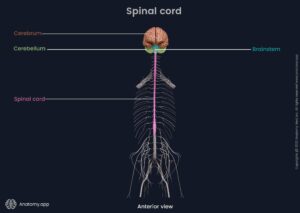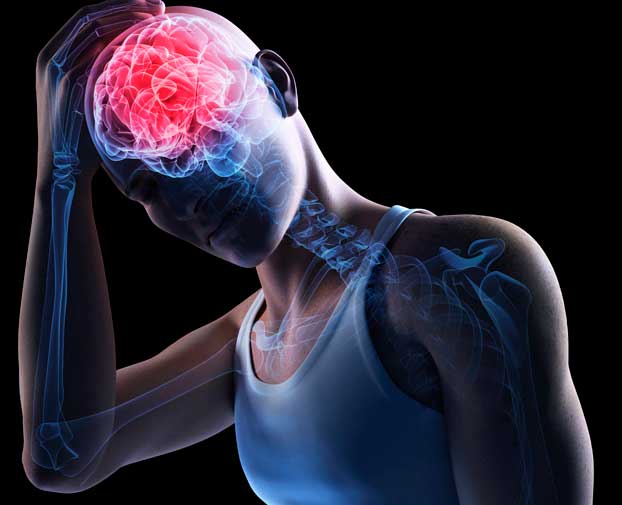Authored by: Humza Rana
Rehabilitation for patients with spinal cord injuries (SCI) plays a critical role in maximizing recovery and improving quality of life, but it remains a complex and evolving field. The mechanisms of SCI involve varying levels of injury to the spinal cord, resulting in motor and sensory deficits that require a tailored approach to treatment. Rehabilitation programs, historically focused on basic physical therapy, have advanced significantly with the incorporation of new technologies and strategies. Early intervention remains essential, as it facilitates better recovery outcomes and reduces secondary complications such as muscle atrophy, contractures, and pressure sores. A comprehensive rehabilitation plan incorporates not only physical therapy but also psychological support, vocational training, and social reintegration. Studies indicate that the sooner patients begin rehabilitation after injury, the better the functional recovery and overall outcomes. Recent advancements in spinal cord injury rehabilitation emphasize a multidisciplinary approach that integrates physical therapists, occupational therapists, psychologists, and other healthcare providers. This approach addresses not just the physical but also the emotional and psychological needs of patients, promoting a more holistic recovery process.

Key interventions include functional electrical stimulation (FES), robotic-assisted therapy, and neuroplasticity based exercises, all of which help to restore motor function and reduce spasticity. Emerging technologies, such as advanced MRI modalities, have revolutionized the way SCI is assessed and monitored, allowing for more precise treatment and evaluation of rehabilitation effectiveness. Moreover, these imaging advancements support research in understanding the potential for spinal cord regeneration and repair, fueling optimism for future SCI treatments. Despite the advancements in rehabilitation programs, there is still much to be done in terms of developing individualized treatment plans that cater to each patient’s unique needs. Continued research and clinical trials are necessary to explore new therapeutic options, refine existing treatments, and ultimately improve the long-term outcomes for individuals living with SCI. In conclusion, while rehabilitation for SCI patients has advanced significantly, a multifaceted, individualized approach that incorporates cutting-edge technology remains essential for optimizing recovery and quality of life.
Current SCI Treatment Landscape in Arab Countries
SCI rehabilitation in Arab countries has greatly advanced in recent years, with many regions incorporating state-of-the-art treatments like neuro prosthetics, robotic exoskeletons, and neurosurgical interventions. Several large hospitals in nations such as Saudi Arabia, United Arab Emirates, Qatar, and Egypt provide advanced therapies, focusing on improving motor recovery and enhancing daily activities.
In addition to modern treatments, the Arab world continues to embrace traditional healing practices, which are culturally ingrained. These therapies are believed to support both physical and emotional recovery and are essential components of rehabilitation.
Modern Techniques and Technological Advances:
- Neuro rehabilitation Programs: These focus on helping SCI patients regain function through advanced approaches, such as functional electrical stimulation (FES), activity-based therapies, and robot-assisted movement training.
- Spinal Surgery: Surgery can help stabilize the spinal column and decompress nerves, which is essential for optimizing long-term recovery after an injury.
- Assistive Technologies: The use of robotic exoskeletons and specialized software programs have significantly impacted SCI rehabilitation, promoting the return of movement and the strengthening of muscles.
Role of Traditional Healing Practices in SCI Rehabilitation
In Arab culture, traditional medicine plays an integral role in treating a wide range of ailments, including SCI. This involves non-conventional therapies such as herbal remedies, cupping therapy, massage, and acupuncture, which are used both as primary treatments and complementary approaches.
Herbal Remedies:
In many Arab communities, herbs such as ginger, black seed oil (Nigella sativa), and olives are widely used for their anti-inflammatory and pain-relieving properties. Studies show that natural extracts from these herbs have the potential to promote healing and improve nerve regeneration, offering an adjunctive role in SCI recovery.
Cupping Therapy:
Known as Hijama in Arabic, cupping therapy has been practiced in the Arab world for centuries. This traditional technique involves the application of suction cups on the skin to improve circulation, alleviate pain, and enhance the healing of soft tissues. This therapy is popular in SCI rehabilitation for improving blood flow and relaxing muscular tension.
Acupuncture:
Acupuncture, although initially associated with Traditional Chinese Medicine (TCM), has gained significant popularity in Arab countries. It is believed to restore the body’s balance of energy (Qi), which can help to reduce pain and accelerate recovery in SCI patients. Acupuncture in combination with modern rehabilitation can support nerve regeneration and pain management, thus enhancing patient recovery.
Massage Therapy:
Therapeutic massage has been shown to improve circulation, reduce muscular stiffness, and increase range of motion in SCI patients. It is often used as an adjunct to modern physical therapy, offering psychological comfort and helping with muscle relaxation.
Combining Traditional Practices with Modern Treatment Approaches
The integration of modern neuro rehabilitation techniques with traditional therapies is promising. This combined approach has the potential to enhance rehabilitative outcomes for SCI patients by addressing both the biomedical and cultural needs of patients.
Enhanced Pain Management:
Modern pharmacological interventions for pain relief, such as opioid-based medications, may be combined with acupuncture and herbal remedies for better pain control and fewer side effects. Herbal oils such as lavender and rosemary are applied topically for their analgesic properties, while acupuncture can modulate pain pathways in the nervous system.
Physical Recovery Through Modern and Traditional Rehabilitation:
The combination of robot-assisted therapy and traditional massage therapy offers SCI patients a holistic approach to regaining mobility and strength. Using advanced rehabilitation robotics to aid movement training along with therapeutic massage to improve circulation and reduce muscle tightness creates a balanced, effective recovery strategy. Furthermore, the psychological benefits offered by traditional therapies, which address the emotional and cultural factors of recovery, should not be overlooked.
Governmental and Healthcare System Initiatives
Arab governments have recognized the importance of integrating traditional therapies into healthcare systems, particularly in countries such as Saudi Arabia, the UAE, and Egypt. The shift toward blending modern science with traditional healing practices is supported by policymakers who recognize the need for comprehensive healthcare approaches in managing SCI and other conditions.
In Saudi Arabia, for example, the Ministry of Health has established rehabilitation centers that incorporate both traditional and contemporary practices to ensure a patient-centered rehabilitation approach. Other Arab nations, such as Jordan and Kuwait, are also embracing these integrative models by conducting research and providing guidelines on combining modern medicine with traditional practices.
Conclusion
The integration of modern medical therapies with traditional healing practices presents a unique opportunity for enhancing the rehabilitation process for spinal cord injury patients in Arab countries. The synergy of herbal remedies, acupuncture, cupping therapy, and neuro rehabilitation techniques creates a more holistic model that addresses the physical, emotional, and cultural needs of patients.
As more Arab nations acknowledge the value of combining the modern and the traditional, this approach can revolutionize SCI rehabilitation and contribute to improved outcomes, particularly in quality of life (QoL) and functional independence. Moving forward, interdisciplinary collaboration between modern healthcare professionals and traditional healers will play a crucial role in ensuring that SCI patients receive the most effective care possible.
Sources
- Rehabilitation Programs for Patients with Spinal Cord Injuries-An Updated Review
- Spinal rehabilitation through robotic-assisted therapy: A systematic review
